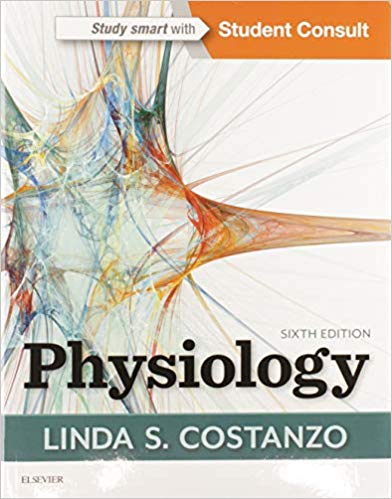This blog is largely devoted to authors who have spent their entire careers teaching and writing about a single medical subject or field. For Dr. Linda S Costanzo, it’s Physiology (2017).
Physiology is the lingua franca of medicine. Medical doctors solve problems by thinking and conversing with their patients and with other professionals in physiology terms. The “grammar” of this language is laid out beautifully and clearly in Physiology (2017), a book which can serve as a foundation for nearly everything you will ever learn in medical school and beyond.

The book is not especially richly illustrated, but the clear prose and organization is what makes this book work so well. Take for example the discussion of pulse pressure, about which the author writes:
Several pathological conditions alter the arterial pressure curve in a predictable way…. [P]ulse pressure is the change in arterial pressure that occurs when a stroke volume is ejected from the left ventricle into the aorta. Logically, then, pulse pressure will change if stroke volume changes or if the compliance of the arteries changes.
Physiology (2017), page 130
The book then goes on to discuss how the pulse pressure is affected by various pathological states. For example, patients with arteriosclerosis have stiff—or noncompliant—arteries. And, since pressure is proportional to stroke volume and inversely proportional to compliance (ΔP = ΔV/ΔC), patients with arteriolosclerosis will have a widened pulse pressure for any given fixed stroke volume. All of this should be very easy to understand for anyone who remembers their premedical curriculum even vaguely.
Some students claim quite correctly that Physiology (2017) may be insufficient for those seeking top grades in physiology. However, physiology is a language and no matter how elevated you want your “vocabulary” to be, you still must employ simple and direct language when communicating with your patients and with other professionals. This book will get you there. Once you’ve mastered the basics, you can move on to more advanced texts.
(I have appreciated and admired Dr. Costanzo’s works for many years. In fact, when I was a medical student I telephone her to thank her for writing her books. I surmise that few, if any, best-selling authors would take a call from an unknown medical student without any platform of any kind who only wanted to say “Thank you for writing the book.” Dr. Costanzo’s humility and accessibility left an enduring favorable impression on me).
I therefore recommend Physiology (2017) very highly to all medical students.


Leave a Reply